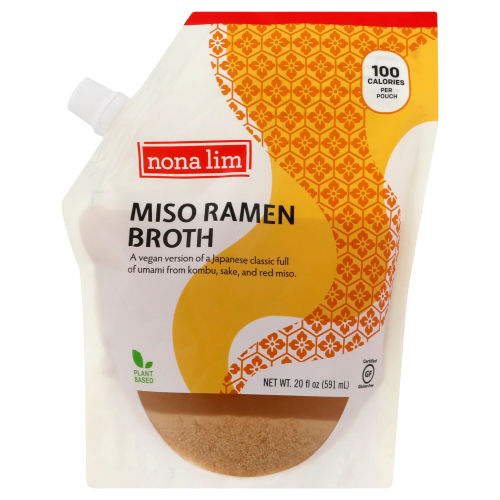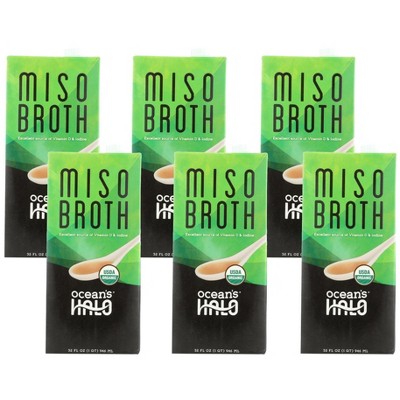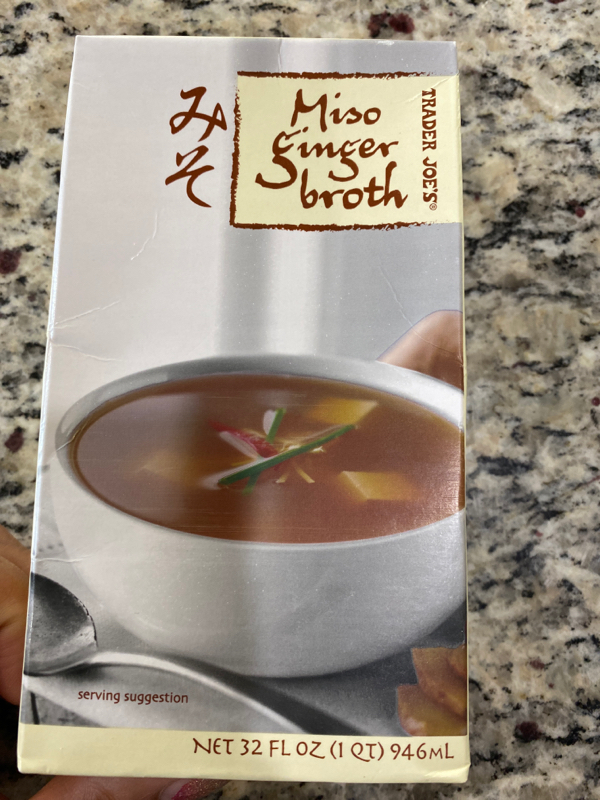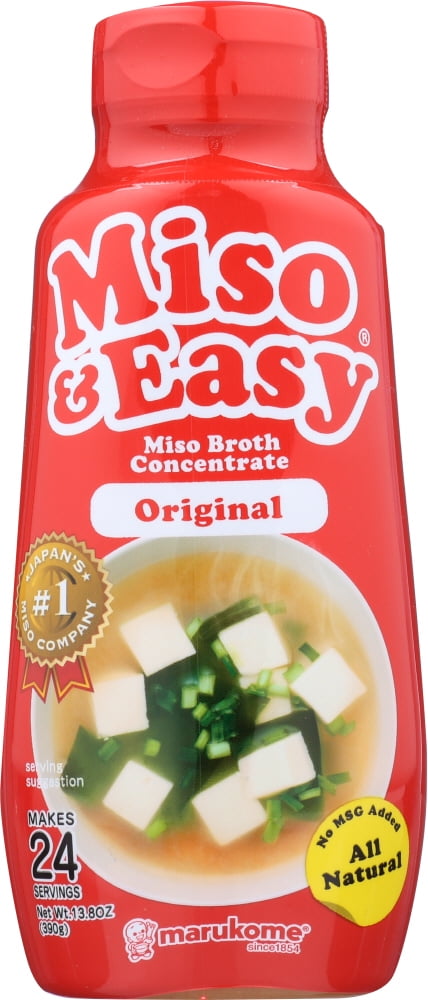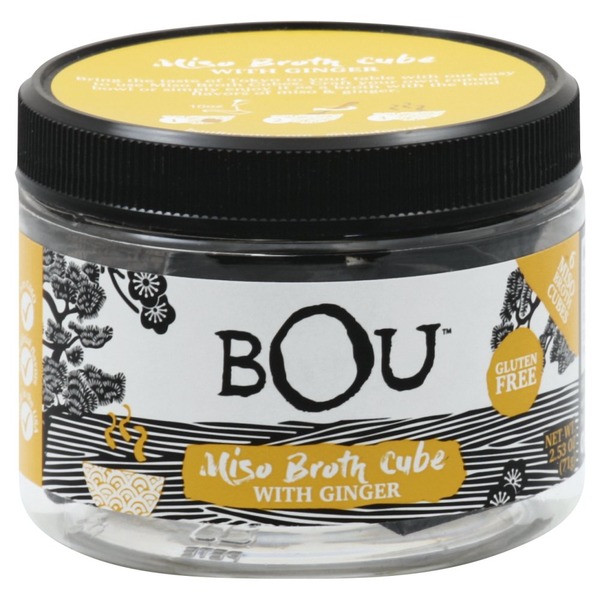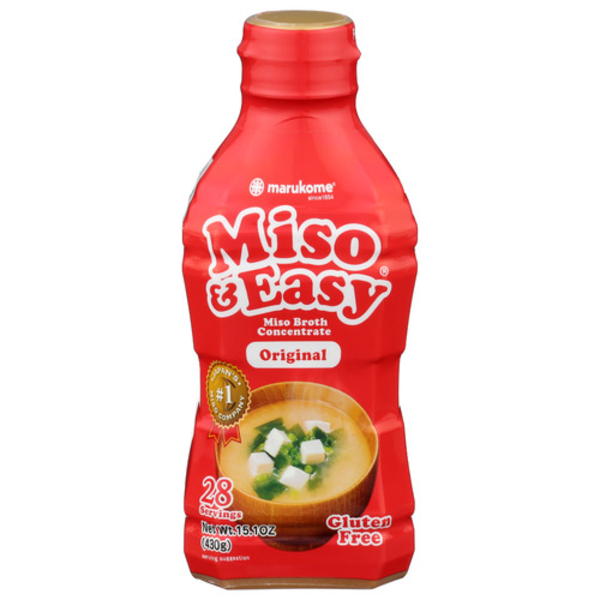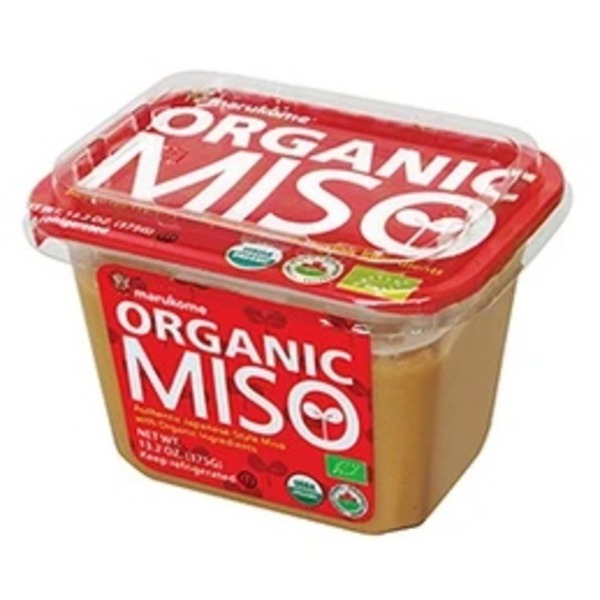SOUPS
Miso Broth
Miso broth is a savory, umami-rich soup base that originates from Japan. It's derived from the fermentation of soybeans, and is commonly used for making miso soup, a traditional Japanese dish often served as a warm and nourishing side in meals. The broth is typically made by dissolving miso paste in a liquid, such as water or dashi stock, and can be customized with various ingredients depending on personal preferences.
For home cooks looking to indulge in authentic Japanese cuisine, miso broth offers versatility in flavor and ingredient pairings due to its subtle yet complex profile. It's an excellent base for soups, stews, and ramen, but can also be used to add depth to dressings, marinades, and sauces. With a long shelf-life, miso paste is a must-have staple in any pantry for those looking to introduce Japanese flavors into their meal rotations.
57%
CARBS
14%
FAT
29%
PROTEIN
290 Miso Broth Products
Miso Broth Is Frequently Used With
Miso Broth FAQ
Miso broth, made by dissolving miso paste in a liquid like water or dashi stock, is an essential part of Japanese culinary tradition. Frequently, people struggle with achieving the right balance of flavors, as miso broth can be easily made too salty or too bland. The key to maximizing flavor is to add the miso paste only after the stock or water has been heated, not before, preserving the complex flavors of the paste. Additionally, miso paste should never be boiled, as it can destroy the beneficial bacteria and enzymes that the fermentation process produces. A surprising hack to enrich the miso flavor is to use it as a marinade or incorporate it into salad dressings.
Do I need to cook miso paste before adding it to the broth?
How do I choose the right miso paste for my broth?
What other ingredients can I add to my miso broth?
Why does my miso broth taste too salty?
How do I make vegan miso broth?
Can I use miso paste for something other than miso broth?
Is it necessary to strain miso broth?
Why did my miso broth separate?
Can I make miso broth without dashi stock?
How do I add tofu to my miso broth?
Expiration & Storage Tips
When does miso broth expire?
Unopened, a package of miso broth or miso paste can last about 1-2 years from its 'best by' date. The 'best by' date is simply the manufacturer's estimation of optimal quality - not a safety date. Therefore, unopened miso broth could still potentially be safe and of great quality after this date. Once opened, refrigerate the product for ensured quality. If in a liquid form, it should be consumed within a week. When in the form of paste, it can last up to a year if properly stored. If it's homemade or frozen, it can keep its quality up to 4-6 months.
How do you tell if miso broth is bad?
There are a few signs that your miso broth has gone bad. For liquid miso broth, if it emits an off smell, changes color, or develops a slimy texture, then it's time to toss it. If it is in the form of a paste, look for any growth (like mold), a change in the color to a darker brown or any strong odd odor. When in doubt, it's safer to discard and replace it.
Tips for storing miso broth to extend shelf life
• Always store in the refrigerator after opening.
• For paste form, keeping it tightly closed in an airtight container can extends its shelf life.
• Homemade miso broth can be frozen for up to 4-6 months. When ready to use, defrost it overnight in the refrigerator or use the defrost setting on your microwave.
• Leftovers from opened packages can also be frozen using a similar regeneration process.
• Always make sure to use clean utensils when handling the product to prevent contamination.
EXPIRES WITHIN
10 - 15
MONTHS
Health Info
Macros
60g
CARBS
14g
FAT
30g
PROTEIN
Allowed on these diets
LOW FAT
HIGH CALCIUM
VEGETARIAN
KETO
MEDITERRANEAN
LOW CARB
VEGAN
LACTOSE FREE
GLUTEN FREE
Contains these allergens
SOYBEANS

